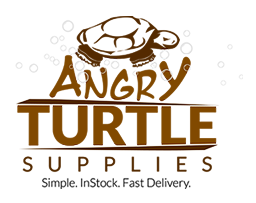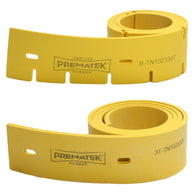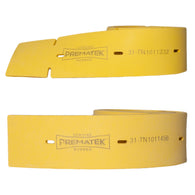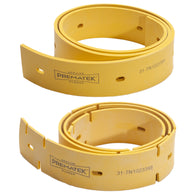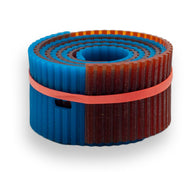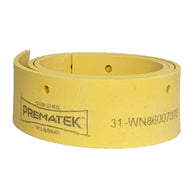Squeegees

We carry Cardinal Brush Corp squeegees. Listed below are the different types we have available and the different uses each type is best for:
- Tan Gum Rubber Squeegee Blades Ideal environment: General purpose. Smooth, even floors with light traffic. Indoors. Offers maximum water collection on indoor floors that are smooth and even. Tan gum Rubber is not recommended for use in oily environments as it absorbs oil, which changes its structural integrity and dramatically reduces its effectiveness. Tan gum Rubber squeegees will wear faster than any of the other types of squeegee blades but are usually the least expensive.
- Genuine PREMATEK™ Rubber Squeegee Blades Ideal environment: Excellent results in many conditions, especially uneven and abrasive surfaces. Comparable if not better than Linatex®. Excellent tear resistance.
- Red Gum Rubber Squeegee Blades Ideal environment: Excellent results in many conditions. Performs similar to Linard®. Excellent tear resistance. This is a harder material than Premium Red that helps reduce squeegee noise. Primarily specified for front squeegees.
- Uretek™ (Polyurethane) Squeegee Blades Ideal environment: Applications that require oil and chemical resistance. Rough surfaces. Engineered to perform as good as or better than OEM blades. They are extremely chemical-resistant and perform well in environments where oil or chemicals are present. Urethane squeegees are the best for use on rough surfaces and on old or uneven floors. They are typically the most expensive blades, but due to their excellent wear life, offer a great value.
- Ribbed Urethane Squeegee Blades Ideal environment: Excellent results in many conditions. Commonly found on dual direction scrubbers and sometimes used as front blades on conventional machines. The different colors denote a different hardness that matches the OEM specification.
- Neoprene Squeegee Blades Ideal environment: Applications that require oil and chemical resistance but where price is a factor. The first material introduced specifically for use in oily environments but has been replaced in many cases by Urethane. It is still a very cost-effective material for oil resistant applications.
